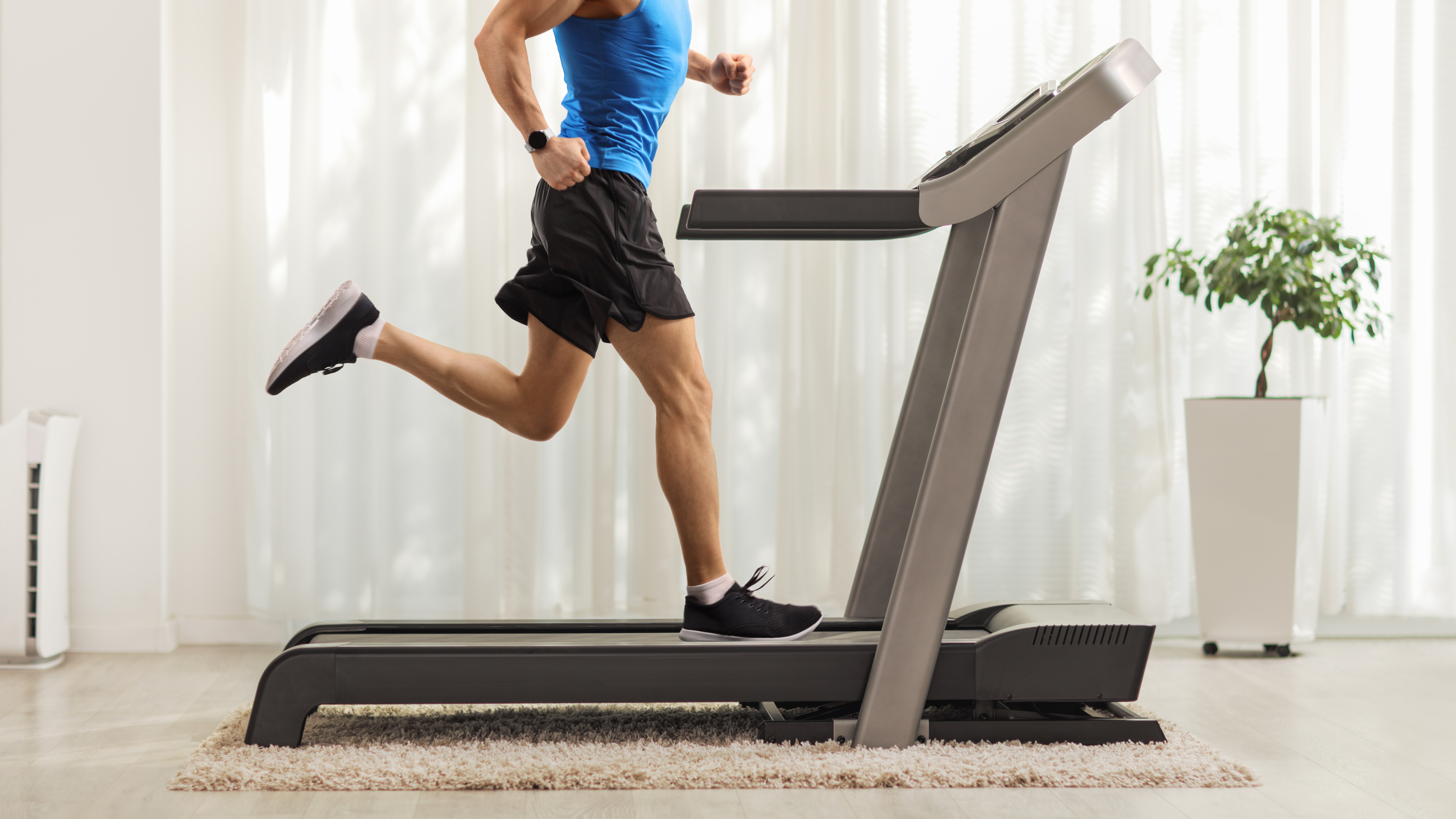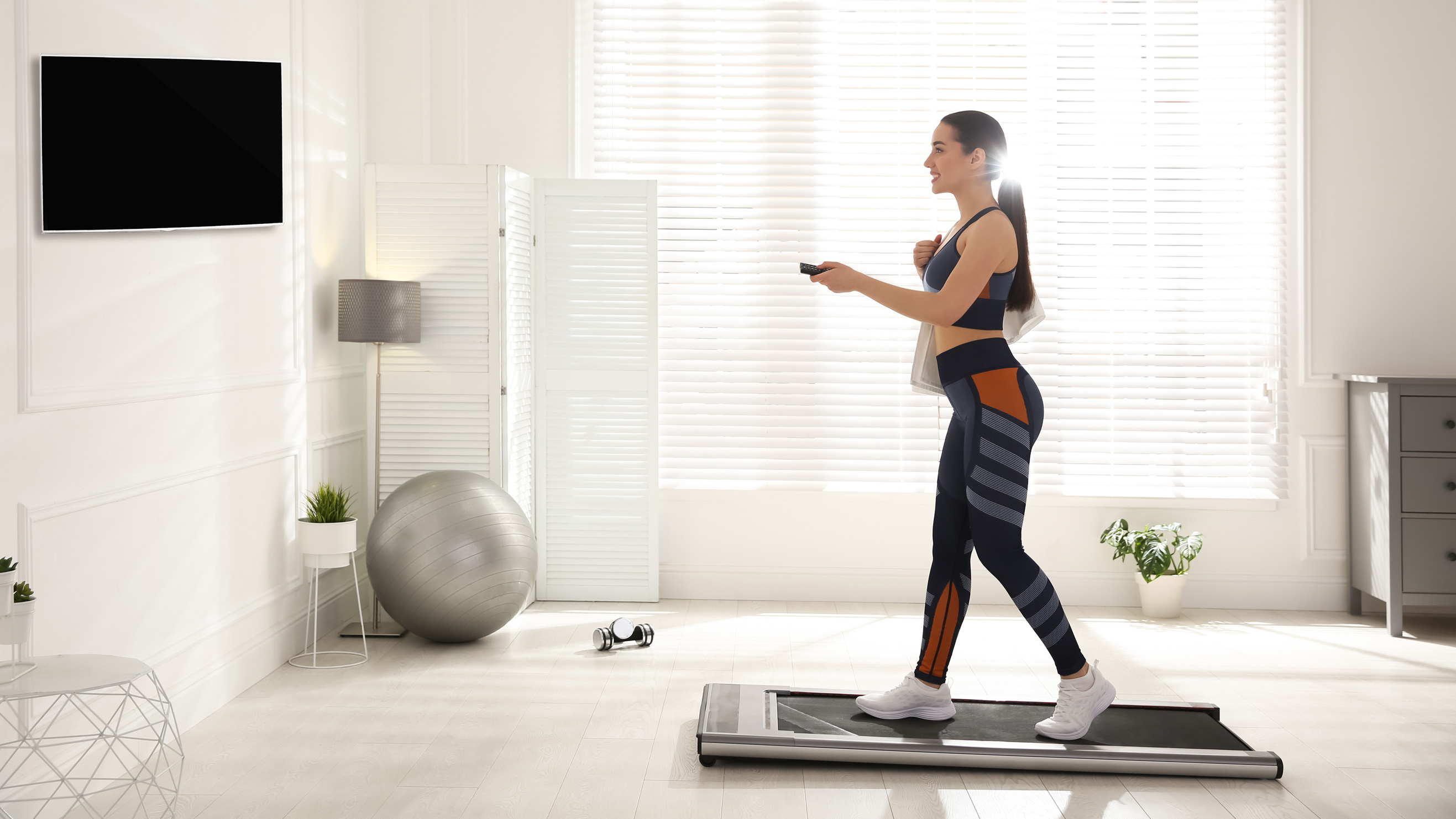I'm a die-hard outdoor runner – here's why I've just started using a treadmill

I love nothing more than lacing up a good pair of the best running shoes and hitting the road on Saturday morning. Whether it's a nice long run taking me through the city and along the river, or a quick jaunt around my local park to get some sunlight and keep me away from my computer screen, it’s so much nicer than my local windowless gym.
Depending on where you live, January means plunging temperatures, often below zero, which can make it difficult to train due to slippery black ice patches and heavy snow.
While I could (and do) run in this temperature, it’s difficult to raise my body temperature enough to break a sweat in a meaningful way - and sometimes, all I want is a nice little sweat session in the morning to clear the pores and sharpen the mind. As it’s been particularly cold recently, I have occasionally chickened out of my regular outdoor run and headed to the gym to use the treadmill.
I used to consider even the best treadmill a thoroughly pointless exercise. Why run indoors on a belt, like a human hamster, when the natural world is right at your fingertips? I thought it was totally redundant, and people who used them were just scared of a little rain.
I could see how the best under-desk treadmill might be useful to people just looking to get their steps in, but I was still thoroughly dismissive of the idea of running for ages on a conventional treadmill.

However, as part of my deep-dive into the Peloton ecosystem last year, I went to one of the treadmill classes at the then-recently-opened Peloton studios, and began to see how exerting total control over every aspect of your run could make for an interesting training experience. You can lock yourself into running certain speeds by setting the pace of the belt, which the instructor used to great effect to crank the speed up as the class reached its crescendo. You can adjust your gradient so you’re running uphill. You have a flat, even surface to run on - far easier than hopping up and down curbs and dodging pedestrians, and no weather hazards.
In training terms, for me, it represents a baseline, or a ‘white room” level of fitness. My performance on a treadmill is indicative of what I can do in ideal conditions, without variables like weather, terrain, parents pushing prams, or two men carrying a pane of glass across the street slowing me down.
Sign up for breaking news, reviews, opinion, top tech deals, and more.
As I’m currently training for Brighton Marathon I’ve also been finding the speed function particularly useful. I can set the treadmill speed to around 5.45/km (my desired ‘race pace’ for Brighton), stick a good podcast on and let my legs do the work. The aim is to get subconsciously used to that pace, so when I run on autopilot I’m not going too fast, or too slow.
And yes, the fact I’m indoors is nice, despite my previous moaning. Battling against the elements is fun, sometimes, but when it’s been below-freezing temperatures for a full week, I really didn’t want to get out of bed. A treadmill run may be a bit of a compromise, but at least I’m sticking to a training plan rather than not running at all. It’ll never replace outdoor runs for me entirely (which means I’m unlikely to ever actually buy one) but I have a gym membership, which means the treadmill is there if I need it.
I now see I was unfairly dismissive of the humble treadmill: it may make me feel like a hamster, but there are plenty of uses to the treadmill beyond getting your steps in while watching The Last Of Us (which is a good enough reason in itself, to be honest). For me, it will always be a tool in the arsenal like the best running watches or a heart rate monitor, not a replacement for outdoor runs per se. But if like me, you’ve also dismissed treadmill runs outright, it’s worth giving them a second glance.

Matt is TechRadar's expert on all things fitness, wellness and wearable tech.
A former staffer at Men's Health, he holds a Master's Degree in journalism from Cardiff and has written for brands like Runner's World, Women's Health, Men's Fitness, LiveScience and Fit&Well on everything fitness tech, exercise, nutrition and mental wellbeing.
Matt's a keen runner, ex-kickboxer, not averse to the odd yoga flow, and insists everyone should stretch every morning. When he’s not training or writing about health and fitness, he can be found reading doorstop-thick fantasy books with lots of fictional maps in them.